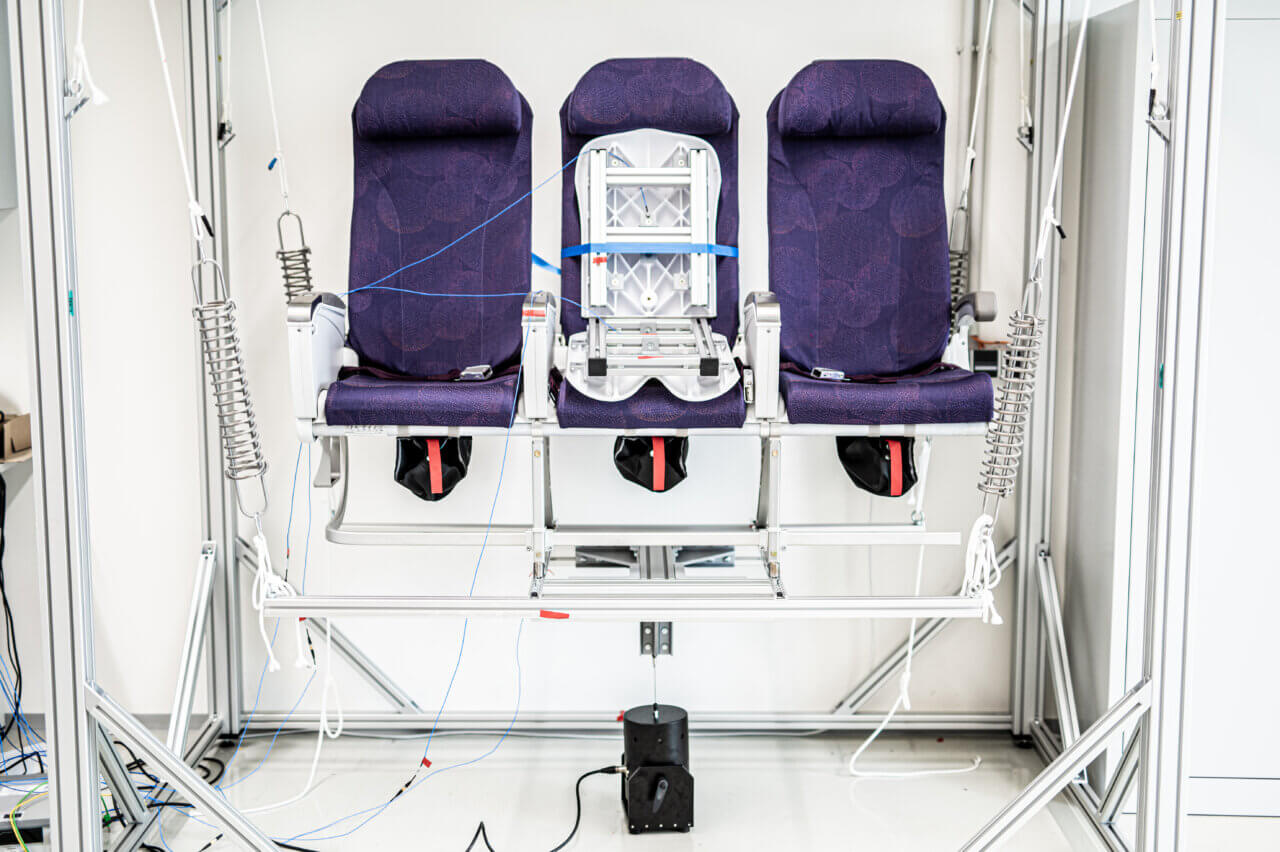Vibrations in the cabin: How can flying become more comfortable? The research project UHBR2Noise is part of the LuFo V-3 program and is funded by the German Federal Ministry of Economics and Climate Protection. ZAL GmbH is working closely with Airbus Operations GmbH and Carl von Ossietzky University Oldenburg on the successfully completed sub-project.
The acronym “UHBR” stands for “Ultra High Bypass Ratio”. The latter means that a large proportion of the air does not pass through the turbine’s combustion chamber but is bypassed. This is accompanied by the fact that the fans in the engine become larger and larger and rotate more slowly. The change in rotational speed causes a change in the perceptible vibrations in the cabin – toward lower frequencies.
The “2Noise” stands for the effect that the generated vibrations have on the cabin or on the seating comfort for the passengers. This is referred to as excitation, which is carried into the aircraft. Due to the already mentioned changes in the engine, the fans turn slower and slower and the frequency becomes lower. These frequencies are potentially perceived as more disturbing and therefore have a negative impact on passenger travel comfort.
So it’s all about vibration comfort and the question: how does the vibration in the cabin through the seat or the row of seats reach the passengers? The Acoustics & Vibrations team at ZAL GmbH has developed an objective measurement method for this purpose, which can be used to assess influences from the seat rail to the passenger. For this purpose, the University of Oldenburg conducted test series on a seat test stand for humans (subjective tests). ZAL GmbH took care of the measurement procedure and designed a process for this. The corresponding test stand at ZAL is known internally as the “Hollywoodschaukel” and almost looks like one: A row of seats “suspended” from springs. A shaker, or vibration generator, introduces force into the seat structure below. The structure reacts to this force and the ZAL experts measure the accelerations at the seat. Using calculations, they find out how much of the introduced force arrives at the seat.
They have also designed a dummy and 3D-printed it together with the ZAL Additive Manufacturing team. The dummy simulates the load on the seat by a passenger and is designed in such a way that the resulting acceleration can be measured on it. From the measurement results, the team derives how much vibration reaches the passengers. In cooperation, the project partners have thus applied a classic measurement method to rows of seats – with the help of a specially constructed dummy. They compared this data with the results obtained by the University of Oldenburg and thus refined the standard procedure. If the engine excitation is known, it can be used to assess in advance how much the row of seats will vibrate. It is not necessary to know how much the seat rail vibrates. One generally looks at the vibration transmission behavior of the seat.
But what happens next? The measurement method helps seat manufacturers to design a seat in such a way that as few vibrations as possible reach the passengers. It can also help airlines or OEMs make a suitable selection of which seat is best suited to which aircraft or engine configuration.
Do you find UHBR2Noise exciting and would like to learn more? Give us a call, we are looking forward to hearing from you!
Dr. Patrick Cordes
Deputy Head of Advanced Materials
+49 40 248 595 139





